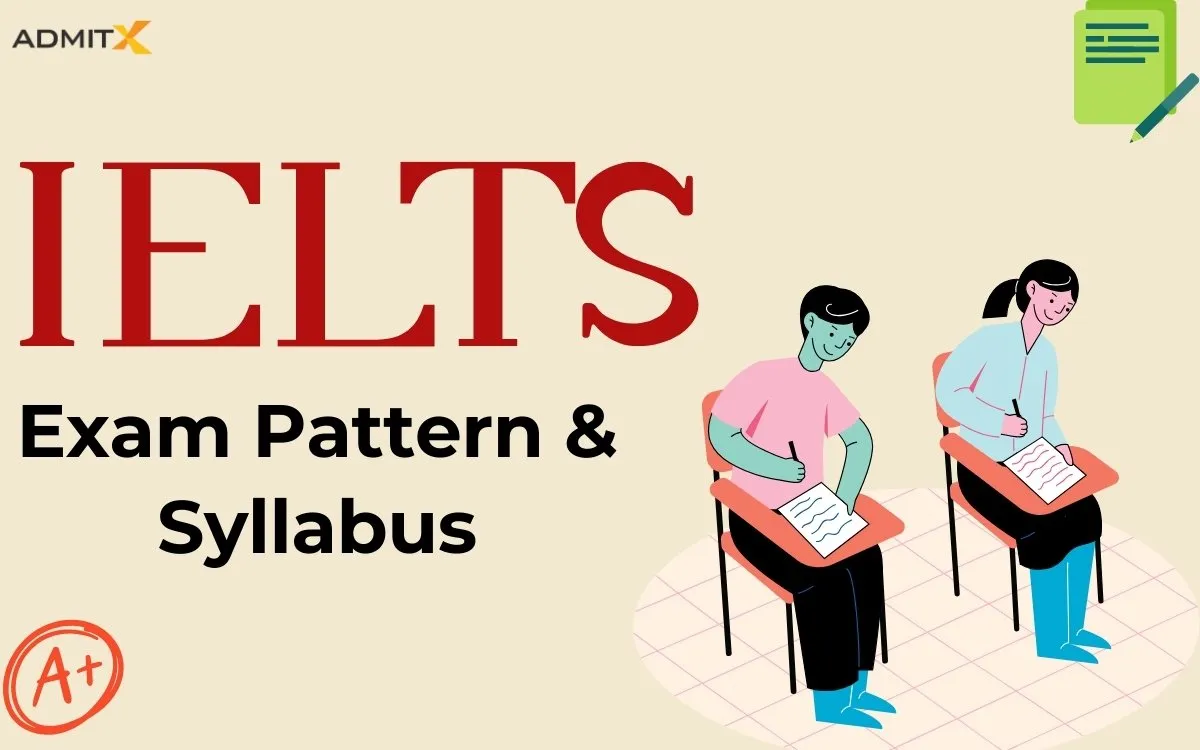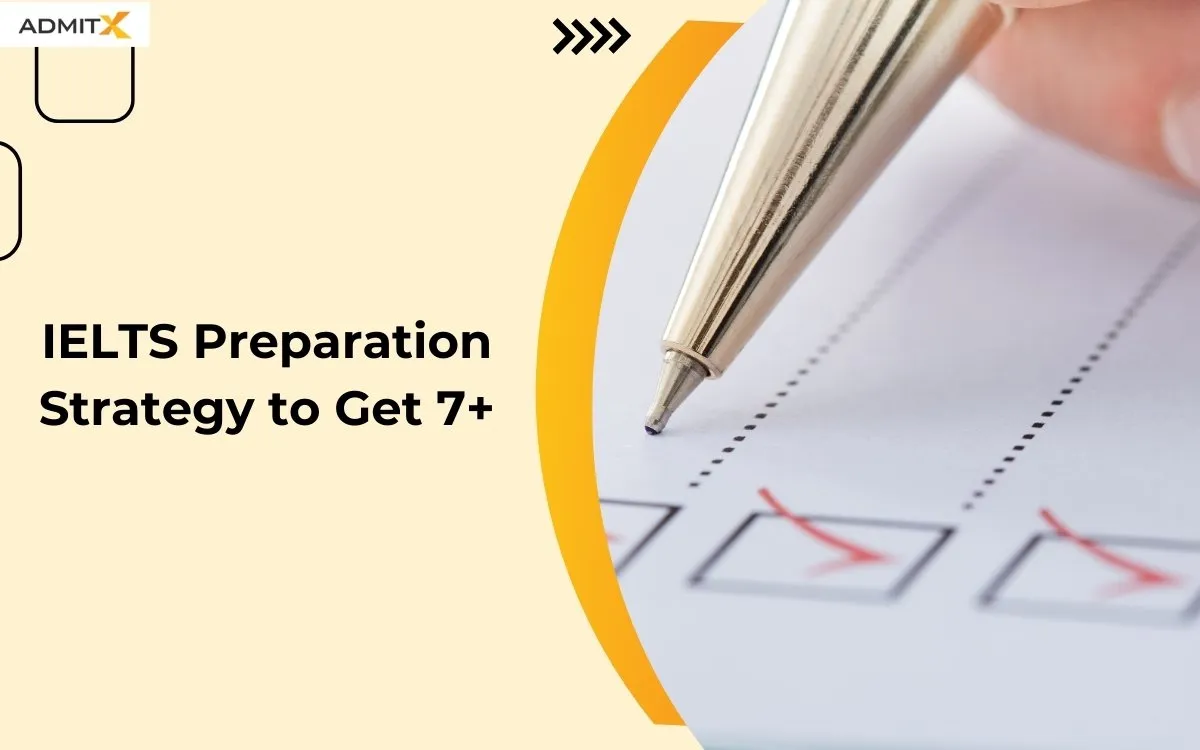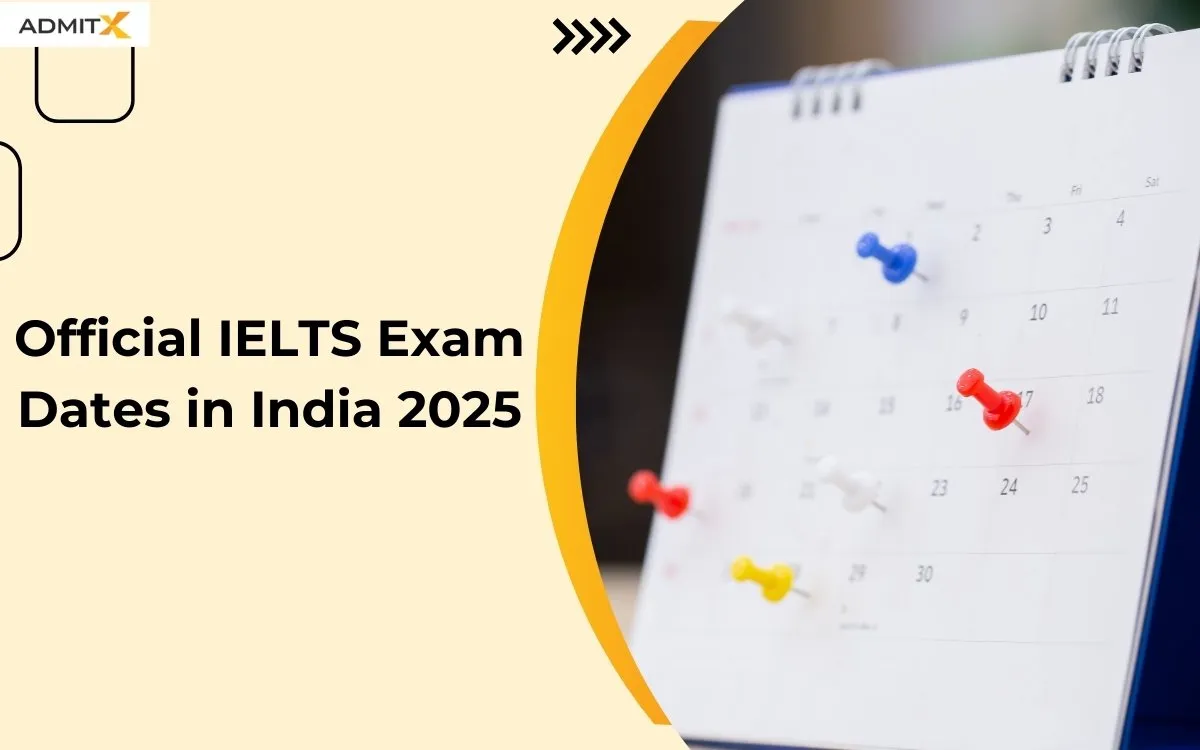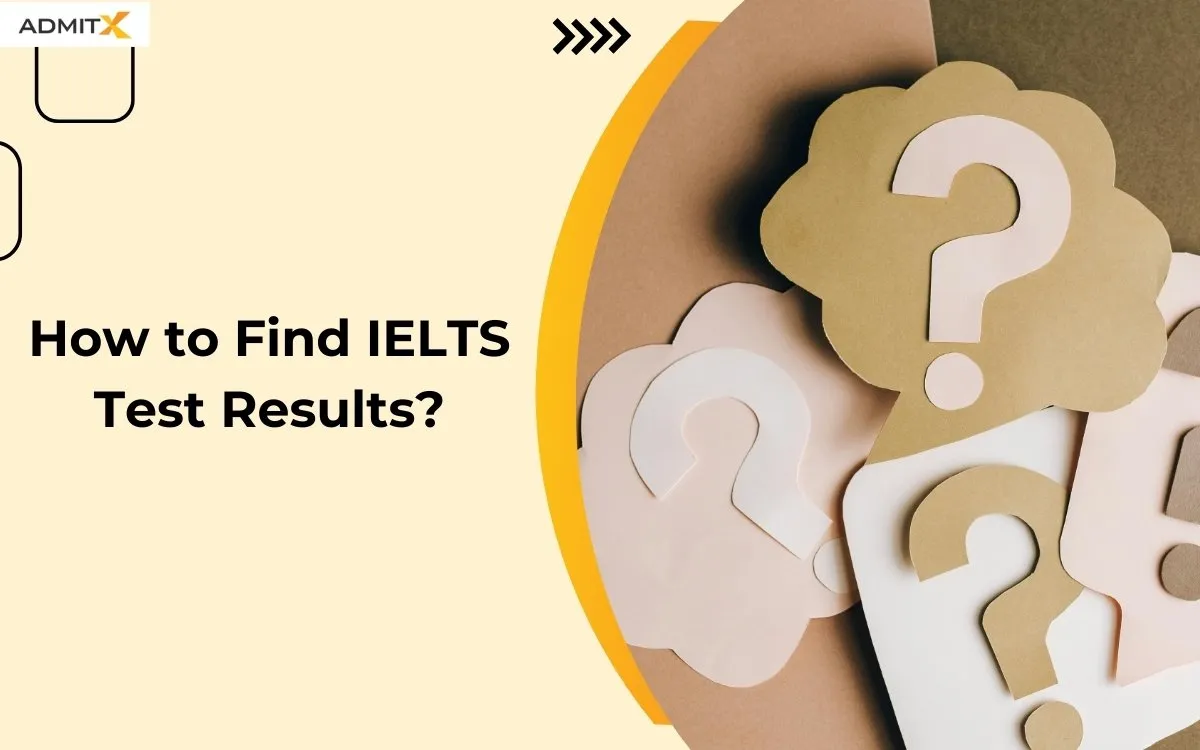
IELTS Exam Pattern & Syllabus: Format, Types of Questions & Marking Scheme
The IELTS exam is a crucial step for students and professionals aiming to study or work abroad. A good IELTS score is essential for admission to top universities, professional certifications, and immigration to countries like the UK.
To excel in the IELTS exam, it’s vital to have a solid understanding of its format and content. This blog provides a detailed overview of the IELTS syllabus and exam pattern, including the test components, their respective timings and scoring, and the overall IELTS course syllabus.
IELTS Syllabus & Exam Pattern: Types of Exams
Before understanding the IELTS syllabus 2024, let’s quickly overview the types of IELTS exams. Below is the table corresponding to the different types of IELTS exams, including content, duration, format and validity.
| Type | Content | Exam Duration | Format | Validity |
|---|---|---|---|---|
| IELTS Academic | Academic English based on college/university coursework | 2 Hours 45 Minutes | Listening Writing Reading Speaking | 2 Years |
| IELTS General Training Test | Academic English based on university coursework | 2 Hours 45 Minutes | Listening Writing Reading Speaking | 2 Years |
| IELTS Life Skills | The English language used in everyday life, such as at the workplace and in society | Varies from 16-20 minutes, depending on the level | Discussion on tasks related to: Personal details Friends Family Buying goods Work Health Leisure etc. | 2 Years |
IELTS Exam Pattern
Below, we have provided detailed information about the Academic IELTS pattern, format and curriculum to give students an idea of the nature of the exam so that they can plan their strategy accordingly.
| IELTS Sections | No. of Questions Per Section | Duration | Description |
|---|---|---|---|
| Reading | 40 | 60 Minutes | Three long reading passages Tasks based on the passages Texts vary from descriptive and factual to discursive and analytical Texts may include non-verbal material like diagrams, graphs, and illustrations Texts are sourced from books, journals, and newspapers |
| Writing | 2 | 60 Minutes (20 minutes for Task 1) (40 minutes for Task 2) | A writing task requiring a 150-word summary, description, or explanation of a table, graph, chart, or diagram A short essay task requiring a 250-word written response |
| Speaking | 3 | 11 to 14 Minutes | A face-to-face interview with short questions A long-turn speaking task on a familiar topic A structured discussion with the examiner |
| Listening | 4 sections (10 questions each) | 30 Minutes | It includes four recorded monologues and conversations |
Sectional Breakdown Of IELTS Syllabus & Exam Pattern
The purpose of the IELTS exam is to evaluate the aspirants’ various English language skills to certify their language expertise. These evaluation of those skills are made through four different sections, which are elaborated below:
IELTS Reading Section
| Criteria | Description |
|---|---|
| Content | 3 texts; the total text length is 2150-2750 words |
| Number of questions | 40 questions in three parts |
| Time Duration | 60 minutes |
| Marking | Each correct response will grant 1 mark |
Type of Questions
The reading section of the IELTS syllabus consists of questions of the following types:
- MCQs: In these types of questions, a test taker has to complete a sentence or answer a question by choosing the correct answer among the different options provided.
- Identifying the writer’s claim/view: Such questions are asked to identify the view of a writer whether they agree with the sentence given.
- Matching information: These types of questions are required test takes to locate specific information within the given paragraph or text sections. They are asked to find specific details, examples, reasons, descriptions, comparisons or summaries.
- Short answer questions: In these types of questions, test takes are required to answer a question in short form, in two or three points which are usually related to factual information about the text.
- Diagram labelling: In diagram labelling questions, test takers are required to complete labels on a diagram which relate to a text description.
- Summary/note/flowchart: In summary, note or flowchart type of questions, test takers are given a summary of a text and they need to complete it with information taken from the text. The summary is only one part of the passage or text.
- Sentence completion: In these questions, aspirants need to complete the sentences from the reading text.
- Matching sentence ending: In matching sentence ending type of questions, aspirants are given the first half of a sentence based on the text which they have read earlier. They are asked to choose the right option to complete it in the best possible way.
IELTS Writing Section
| Criteria | Description |
|---|---|
| Content | Tasks to communicate the idea/opinion or logic in written form. |
| Number of questions | 2 tasks |
| Time Duration | 60 minutes |
Type Of Questions
The writing section of the IELTS syllabus consists of questions based on the following topics:
Task 1: Discussion on Chart, diagram, picture, object’s photo, etc. The minimum word limit for task 1 is 150 words.
Task 2: Discussion on relevant issues related to general awareness. The minimum word limit for task 2 is 250 words.
IELTS Speaking Section
| Criteria | Description |
|---|---|
| Content | Discussion between the test taker and the examiner |
| No. of tasks | 3 tasks |
| Time Duration | 11-14 minutes |
Type of Questions
The speaking section of the IELTS syllabus consists of questions based on the following topics:
Task 1 – Introduction & Interview
Time Duration: 4-5 minutes
Task 2 – Long Turn
Time Duration: 3-4 minutes
Task 3 – Discussion
Time Duration: 4-5 minutes
IELTS Syllabus for 2025
Preparing for the IELTS exam does not follow a strict syllabus, but candidates can get ready by doing a few things. They should listen to different kinds of English audio, read lots of different texts, practice writing essays and reports, and talk to friends or a tutor to improve their speaking.
They can find plenty of helpful resources on the official IELTS website like sample questions, practice materials, and information on how to register for the test. They may need to focus on the following topics while preparing for IELTS Exam:
- Agriculture Sciences
- General Knowledge & Current Affairs
- Science & Technology
- Social Sciences
- Humanities
Skills Required for IELTS
The IELTS exam syllabus contains general topics which evaluate the candidates on some parameters. Hence, students are required to prepare the IELTS syllabus by developing and polishing the following skills accordingly.
- Critical thinking skills
- Communication skills
- Active listening
- Observation skills
- Analytical skills
- Presentation quality
- Speaking fluency
- Listening comprehension
- Grammar
Key Takeaways By AdmitX
IELTS is considered an important English language proficiency exam that evaluates the English language skills of students and working professionals desiring to continue or initiate their careers in foreign countries. In countries like the UK, IELTS is also essential to get immigration permission. The exam is not very tough, but it requires strategic preparation to get good scores for entry into the dream institution.
Before embarking on the test prep, one should undergo the whole IELTS syllabus and pattern of the exam to understand the format and develop the required calibre to ace the test.
FAQs
What is the IELTS exam structure?
The IELTS syllabus is made up of four sections: Listening, Reading, Writing, and Speaking. Each section is scored individually on a scale of 0-9, with increments of 0.25, 0.5, and 0.75. Your overall band score is the average of these four individual scores.
Which IELTS paper is easy?
Many test-takers find the IELTS General Training exam easier than the IELTS Academic exam. However, individual experiences can vary based on personal strengths and weaknesses.
Which is the hardest part of IELTS?
The Writing section is often considered the most difficult part of the IELTS exam. It requires strong writing skills to produce clear and coherent essays, reports, letters, and descriptions of visual information. While challenging, consistent practice can help you improve your writing skills and achieve a good score.
Is a passport required for IELTS?
Yes, passport is mandatory for IELTS. IELTS prescribe no passport, no test policy so students must carry all their necessary documents on the test day to avoid any issue.
Does handwriting matter in IELTS?
Handwriting does matter in the IELTS pen and paper exam. While the content of your writing is most important, legible and well-structured handwriting can enhance the overall impression of your work and make it easier for examiners to understand.
If you are an aspirant looking to study at your dream university, book an appointment with AdmitX today and start your applications early to avail yourself of all the benefits.








